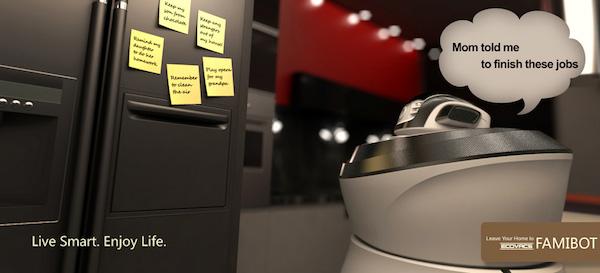Hi, Robot!

Along the way, it became clear to me that the day when a smart home system is capable of monitoring and controlling “domestic” robots - such as semi-autonomous motorized vacuum cleaners, pool cleaners, window cleaners, and robot lawnmowers - is the day when we’ll know home automation has come of age.
Obviously, it’ll be a while before that happens. (Some naysayers in the major media think that day will never come. You can read sometime S&V contributor, Dennis Burger’s, excellent rebuttal here.) It’s true that none too many of the current automation systems, subsystems, remotes, and apps like to play nice with one another; and since few of them (with the notable exceptions of Control4, Crestron, Savant, and a couple of others) can control all aspects of a smart home, including the AV system, putting together a really smart smart home is not something you can easily DIY over a long weekend. At the moment, it’s the sort of thing that’s best left in the hands of professionals.
But that’s “at the moment.” Over the years, two wireless communication protocols - Z-Wave and Zigbee - have become entrenched standards; and widespread industry adoption of those standards has helped bring down the cost of the controllers, sensors, motors, and a plethora of the other things you need to smarten up your home. (Some Z-Wave light dimmers and appliance outlet modules are well under $50 each.) Add Wi-Fi, Bluetooth, and Insteon (and PLC and MoCA…) and you’ll be able to wirelessly communicate in more ways than the NSA. Revolv, as a matter of fact, boasts that its $299 little, round, red Revolv Hub includes seven wireless radios and is capable of communicating via 10 different wireless protocols. With that much wireless fire power (when Revolv eventually activates Zigbee and the other protocols via software updates), the potential for smart home system building will be phenomenal. And Revolv isn’t the only smart home star on the horizon. Other systems, such as the extremely interesting (and, at $239 for the controller, extremely affordable) Piper, SmartThings, Staples Connect, and Vera, all look like they could be excellent platforms on which to build a next-generation smart home.
So where do domestic robots enter into the picture?
Well, for starters, before we can make that marriage of home and machine, we’ll need not just a smart home but a “thinking home”. Samsung’s Smart Home project may make your home more intelligent and able to communicate with you (or let you use your fridge to spy on your kids while you’re away), but at this point it’s not really a thinking home. The $249 Nest Learning Thermostat (and now one from Honeywell) with its built-in pattern-learning capability is closer to the real deal because it can make HVAC-related decisions based on historical trends. On a more basic level, Roomba, Moneual, and others already make robot vacuum cleaners that you can program with a cleaning schedule. When it comes out in the Spring, Moneual’s RYDIS H68 will do real-time monitoring and self-diagnosis and sends the results to your smartphone. Neato Robotics and iRobot (the makers of Roomba) already offer the ability for programmers to hack into the companies’ cleaners. When Wi-Fi or Z-Wave is incorporated into more of these types of robots, the thinking home will (almost literally) come to life.
For example, while you’ll still want to have your Ecovacs Deebot D77, which has the awesome capability of being able to return to its charging base and empty its internal dust bin into a larger - and much easier to empty - collection bin on top, do its vacuuming duties on a regular basis, in a thinking home the controller would note that you have a party scheduled for Friday night at your house. Instead of waiting to vacuum on Monday, it would send the Deebot D77 out to clean on Friday afternoon. Likewise, your home controller could decide not to let your Robomow RS612 out of the garage for its regularly scheduled lawn mowing if the sky is threatening to rain or if the system’s motion sensors determine that there is physical activity going on in the area to be mowed. (Mowing over the kids would not be a good feature in a robot lawn mower.)
The days of Will Smith chasing a shiny metal manlike thinking machine in I, Robot are certainly a long way away. And I’m pretty sure that Ecovacs’ Famibot - a robot that controls your other robots, along with being “a good companion to families” and a robotic, mobile air purifier - is more conceptual than real. But if my wanderings deep down in the robot holes are any indication, giving your home an upgrade from smart (or even plain old dumb) to thinking is a lot closer than you think.
- Log in or register to post comments




















































